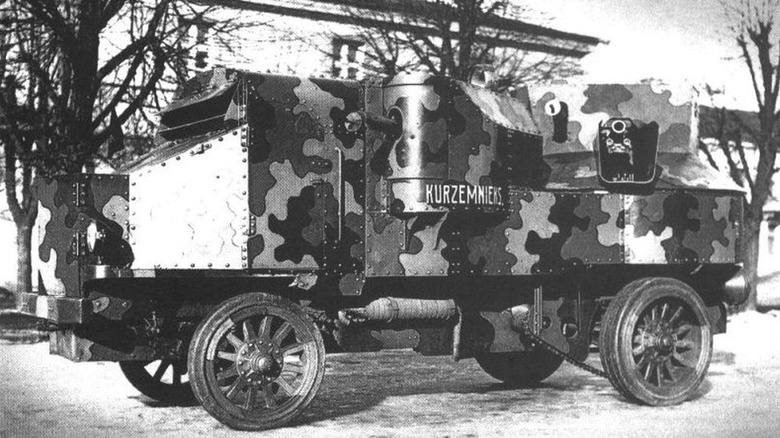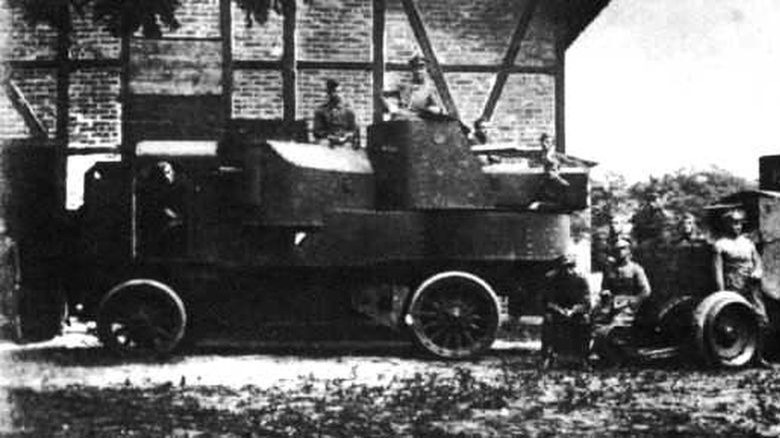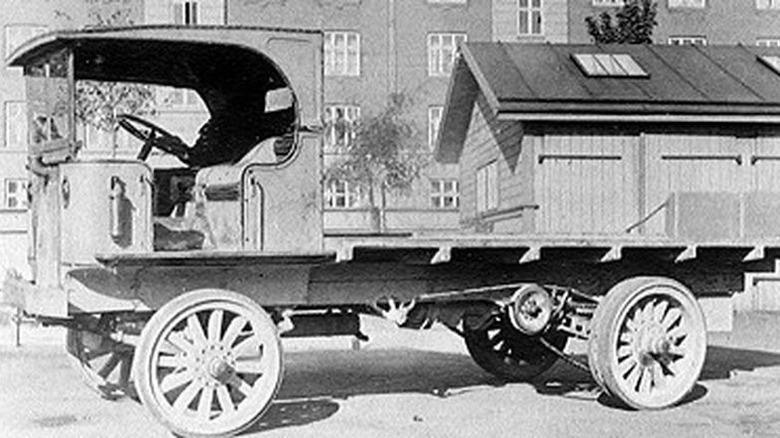The American Truck Turned WWI Fighter: The Putilov-Garford Armored Car
As the opening salvos of World War I rang out in 1914, the armies of several nations began putting a hodgepodge fleet of makeshift armored vehicles into use for everything from transporting troops to hauling ammunition. The idea of putting armor on a vehicle wasn't particularly new, as the first armored car was built some 15 years earlier.
In 1915, the Americans developed the King Armored Car consisting of some light armor plating bolted onto an already existing King-manufactured vehicle chassis, with a turret stuck on top for good offensive measure. It never actually saw action in WWI, partly because the United States didn't enter the Great War until April 1917. Meanwhile, the British Royal Naval Armoured Car Division built its first armored cars using Rolls Royce and Lanchesters kitted up with armored plating and weapons.
While the concept of a portable fort capable of unleashing serious firepower was enticing, these mobile monsters of mayhem usually lacked sufficient horsepower to get over rough terrain due to the added weight of the armor. Plus, the turret made the vehicle top-heavy and prone to tipping over on uneven ground.
While these traits were emblematic of many retrofitted war wagons that proved they weren't ready for prime time, it didn't stop European armies directly involved in the war from hastily running them out onto the battlefield. Such is the case with Russia's Putilov-Garford Armored Car.
[Featured image by Аскольд via Wikimedia Commons | Cropped and scaled | CC BY Public Domain]
The American truck chassis that sat beneath a Russian armored car
In September 1914, Russia's Chief Military-Technical Department (GVTU) created the 1st Armored Automobile Company for the Imperial Army's first armored division. Much like the armored cars of the U.S., Russia also slapped some armor plating on top of existing consumer vehicles, including the Russo-Balt Type C/M that used a four-seat passenger car from Russian car maker Russo-Baltique.
But, it also used parts from wherever possible, including the German-made Mannesman-Mulag. This was common practice then, as even the Germans reused captured armored vehicles without hesitation.
The chassis of choice for the Putilov-Garford Armored Car was a 5-ton truck built by Garford Motor Truck Company in Elyria, Ohio. The biaxial RWD (4×2) lorry was powered by a 36hp air-cooled 4-cylinder gas engine, with a top speed of just 22 mph. But we're talking 1914 here, when automobiles were still a revolutionary new concept, and a just-off-the-production-line Ford Model Ts topped out somewhere between 40 – 45 mph.
Plated with 6.5 mm (quarter inch) rolled steel sheets and riveted to a steel frame attached to the Garford 5-ton truck chassis, it was effectively "bulletproof" to rifle fire. At the rear was a 76.2mm M1910 field gun. Three 7.62 mm Vickers machine guns firing 5,000 rounds each sat inside sponsons around the hull. Early versions weighed almost 9 tons, while later versions weighed 11 tons, which cut the speed down to about ten mph (less than two in reverse).
[Image by Unknown via Wikimedia Commons | Cropped and scaled | CC BY Public Domain]
Built Garford tough
Garford started life in 1903 as the Federal Manufacturing Company, making bicycles and eventually supplying car parts and chassis to the auto industry, including Ardsley, Gaeth, Cleveland, Rainier, and most prominently, Studebaker. In fact, some of the early Studebakers were badged "Studebaker-Garfords," with the high-end models made exclusively by Garford.
In 1909, Garford started a heavy truck division, but two short years later (in 1911), two significant things occurred. First, Studebaker assumed control of the E-M-F Company (another early American automobile manufacturer). Secondly, Garford's car-making division was bought out by Willys-Overland, while the truck division remained with Garford.
Its trucks were routinely exported overseas for military use, including in Russia. The Imperial Army liked its higher payload potential, which was needed for the added weight of the weapons and armor. As previously mentioned, these trucks just so happened to be available as several had been ordered and were sitting at a military automotive school, ready and waiting to be retrofitted.
Russia would later claim that the Putilov-Garford was the world's first self-propelled gun with wheels (it was not). The few that were made (48 by some estimates) and survived WWI went on to serve in the Red Army well into the 1930s.
[Image by Unknown via Wikimedia Commons | Cropped and scaled | CC BY Public Domain]


